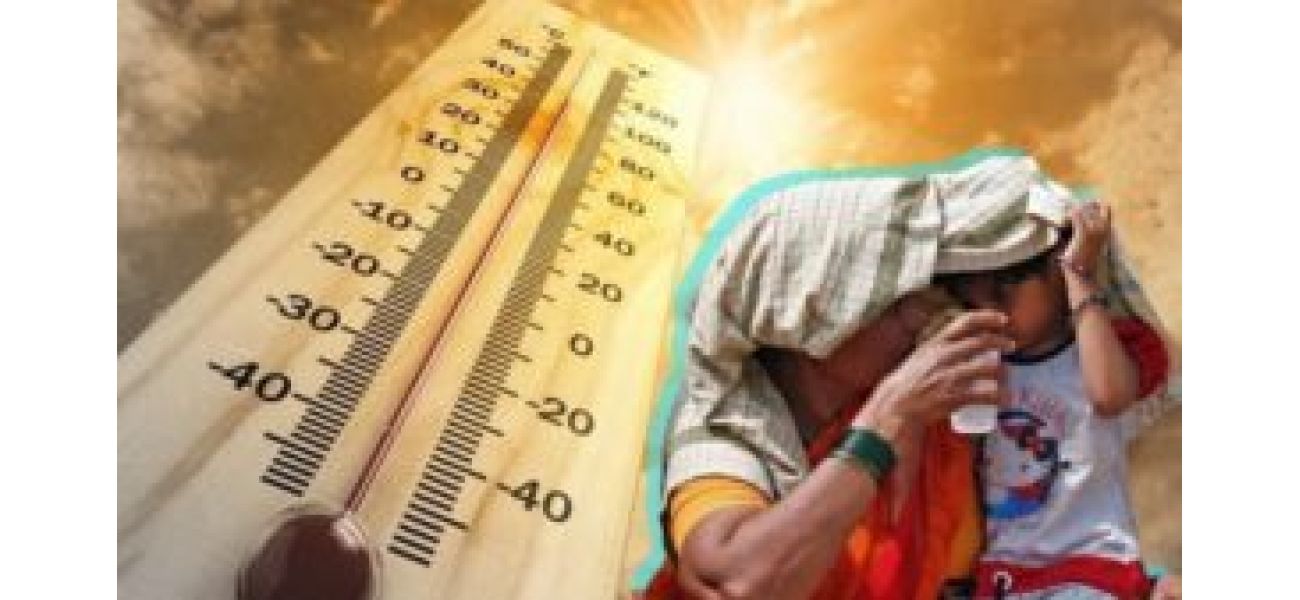Last year's Odisha heatwave caused many deaths.
Global Environment Day brings shocking news: in 2024, a high number of deaths occurred in Odisha due to heatwaves.
June 5th 2025.

Today is World Environment Day, a significant day for raising awareness about the state of our planet. This year, as we reflect on the current state of our environment, we are confronted with a shocking and heartbreaking reality: the number of deaths caused by heatwaves in Odisha in 2024.
While some news outlets reported over 100 suspected heatwave-related deaths in Odisha last year, an RTI application by OrissaPOST uncovered the truth that there were 58 confirmed deaths due to heatwaves in the state. The office of the Special Relief Commissioner, Odisha, provided this information, revealing that the district of Sundargarh had the highest number of fatalities with 11 deaths. Bolangir and Subarnapur districts reported 10 and 6 deaths respectively, while Bargarh, Sambalpur, and Jharsuguda reported 5, 5, and 4 deaths. Other districts such as Cuttack, Dhenkanal, Keonjhar, Khurda, and Nuapada recorded 2 deaths each, while Angul, Balasore, Koraput, and Puri had one heatwave-related death each.
It is not just Odisha that has been affected by this crisis. Across India, there were reportedly over 48,000 cases of heatstroke and 159 heat-related deaths in 2024, making it one of the most severe heatwave spells since 2010. However, Odisha was among the states hit the hardest. Experts believe that the actual number of deaths could be much higher due to underreporting and shortcomings in data collection.
But what caused this crisis in Odisha last year? The heatwave deaths were concentrated in a short period from April to early June, during which the state experienced record-breaking heat. Many districts saw temperatures rise above 44 degrees Celsius for extended periods. This coincided with India's general election, which took place in April and May, and many polling officers, security personnel, and support staff were affected by the heat after working long hours. Even voters, including the elderly, were at risk while waiting in long queues under the scorching sun. This proved to be fatal for many, especially for those who work outdoors, the elderly, and people with pre-existing health conditions.
Experts warn that India is becoming increasingly vulnerable to extreme heat, and new studies have highlighted the risks posed by climate change. According to a study by the Council on Energy, Environment and Water, about 57% of districts in India, which is home to 76% of the population, face a high to very high heat risk. The study also revealed that the number of very warm nights has increased at a faster rate than very hot days in the past decade. These terms refer to periods when temperatures surpass the 95th percentile of historical data for minimum and maximum temperatures, respectively.
The future impact of heatwaves is also a cause for concern. A recent report by the World Meteorological Organization predicts that there is a 70% chance that the global average temperature for the period 2025-2029 will exceed 1.5°C above pre-industrial levels. This is a significant increase from the previous projection of 47% for 2024-2028 and 32% for 2023-2027.
Health experts have identified certain groups as being most vulnerable to heat stress, including outdoor workers, pregnant women, the elderly, children, and people with pre-existing health conditions. According to the World Health Organization, more than 166,000 people died due to heatwaves between 1998 and 2017.
On this World Environment Day, let us not forget the urgent need for environmental protection and global climate action. As we work towards creating a better and safer planet for ourselves and future generations, let us remember the devastating impact of heatwaves and take steps to mitigate its effects.
While some news outlets reported over 100 suspected heatwave-related deaths in Odisha last year, an RTI application by OrissaPOST uncovered the truth that there were 58 confirmed deaths due to heatwaves in the state. The office of the Special Relief Commissioner, Odisha, provided this information, revealing that the district of Sundargarh had the highest number of fatalities with 11 deaths. Bolangir and Subarnapur districts reported 10 and 6 deaths respectively, while Bargarh, Sambalpur, and Jharsuguda reported 5, 5, and 4 deaths. Other districts such as Cuttack, Dhenkanal, Keonjhar, Khurda, and Nuapada recorded 2 deaths each, while Angul, Balasore, Koraput, and Puri had one heatwave-related death each.
It is not just Odisha that has been affected by this crisis. Across India, there were reportedly over 48,000 cases of heatstroke and 159 heat-related deaths in 2024, making it one of the most severe heatwave spells since 2010. However, Odisha was among the states hit the hardest. Experts believe that the actual number of deaths could be much higher due to underreporting and shortcomings in data collection.
But what caused this crisis in Odisha last year? The heatwave deaths were concentrated in a short period from April to early June, during which the state experienced record-breaking heat. Many districts saw temperatures rise above 44 degrees Celsius for extended periods. This coincided with India's general election, which took place in April and May, and many polling officers, security personnel, and support staff were affected by the heat after working long hours. Even voters, including the elderly, were at risk while waiting in long queues under the scorching sun. This proved to be fatal for many, especially for those who work outdoors, the elderly, and people with pre-existing health conditions.
Experts warn that India is becoming increasingly vulnerable to extreme heat, and new studies have highlighted the risks posed by climate change. According to a study by the Council on Energy, Environment and Water, about 57% of districts in India, which is home to 76% of the population, face a high to very high heat risk. The study also revealed that the number of very warm nights has increased at a faster rate than very hot days in the past decade. These terms refer to periods when temperatures surpass the 95th percentile of historical data for minimum and maximum temperatures, respectively.
The future impact of heatwaves is also a cause for concern. A recent report by the World Meteorological Organization predicts that there is a 70% chance that the global average temperature for the period 2025-2029 will exceed 1.5°C above pre-industrial levels. This is a significant increase from the previous projection of 47% for 2024-2028 and 32% for 2023-2027.
Health experts have identified certain groups as being most vulnerable to heat stress, including outdoor workers, pregnant women, the elderly, children, and people with pre-existing health conditions. According to the World Health Organization, more than 166,000 people died due to heatwaves between 1998 and 2017.
On this World Environment Day, let us not forget the urgent need for environmental protection and global climate action. As we work towards creating a better and safer planet for ourselves and future generations, let us remember the devastating impact of heatwaves and take steps to mitigate its effects.
[This article has been trending online recently and has been generated with AI. Your feed is customized.]
[Generative AI is experimental.]
0
0
Submit Comment





